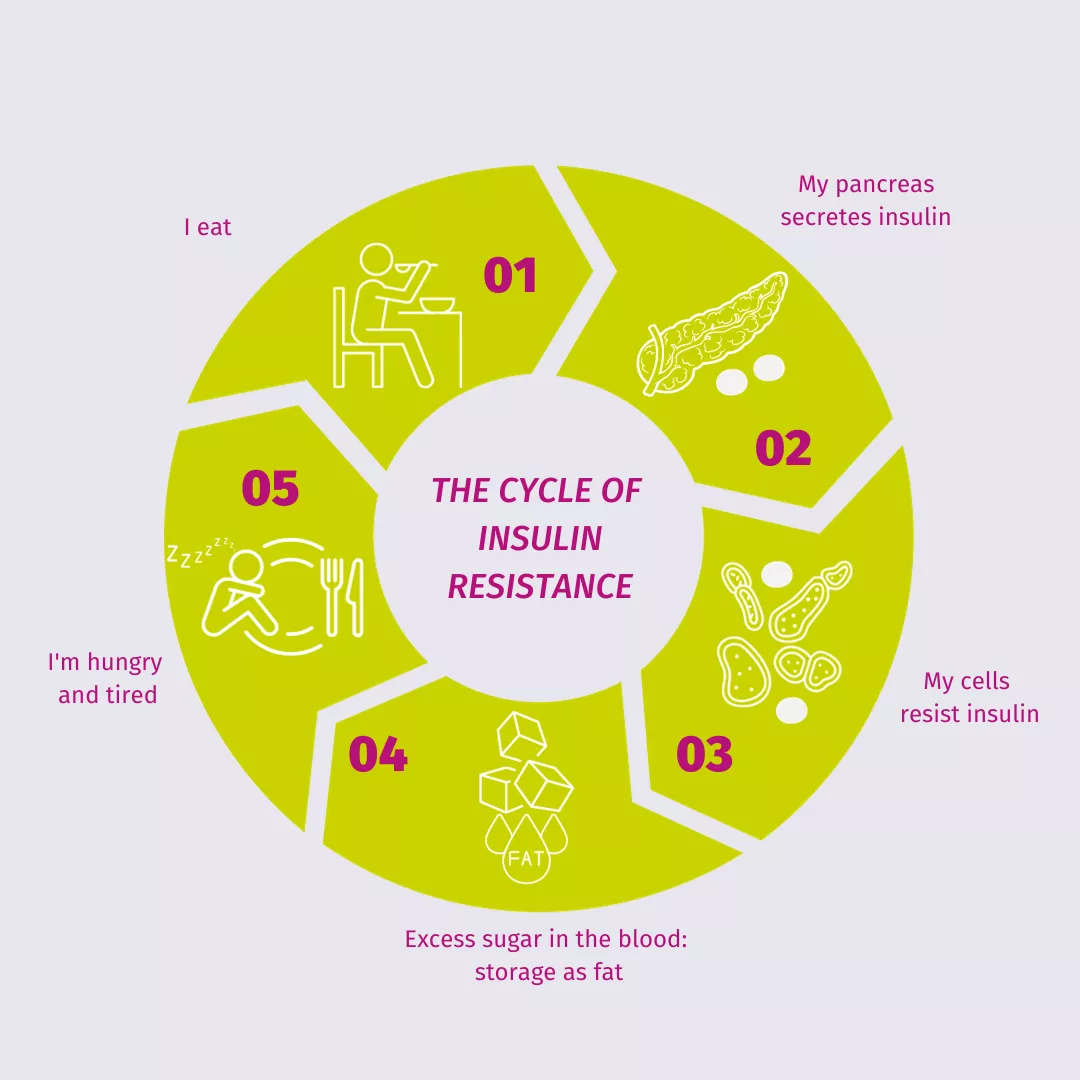A bacterium that prevents diabetes mellitus?
For the time being, this dream has only been validated in test tubes and in mice, not yet in humans. However, the A. indistinctus bacterium may improve insulin resistance in people with pre-diabetes.
- Learn all about microbiota
- Microbiota and related conditions
- Act on your microbiota
- Publications
- About the Institute
Healthcare professionals section
Find here your dedicated section
Sources
This article is based on scientific information

About this article
(sidenote: Diabetes mellitus Chronic disease that occurs either when the pancreas does not produce enough insulin or when the body cannot effectively use the insulin it produces. Over time, diabetes can damage blood vessels in the heart, eyes, kidneys and nerves. ) is all about sugar, and more specifically, blood sugar levels ( (sidenote: Glycemia Blood sugar level. ) ). The aim is to avoid peaks (i.e., hyperglycemia) following meals. In healthy individuals, (sidenote: Insulin Hormone produced by the pancreas tasked with lowering blood sugar levels to around 1 g/L. ) regulates blood sugar levels at around 1 g/L. In diabetic patients, the body fails in this regard, either because the pancreas does not produce enough insulin (type I diabetes mellitus), or because the body resists insulin’s commands (type II diabetes mellitus). The gut microbiota appears to be involved in the insulin resistance observed in type II diabetes, but the mechanisms involved remain unclear. Or rather “remained” unclear, since a study published in the prestigious journal Nature has shed some light on the subject.
Micro-sugars promote insulin resistance
The researchers concluded that the richer our stools are in certain molecules, the greater our resistance to insulin. The feces of insulin-resistant volunteers contained far more (sidenote: Carbohydrates A family of macronutrients that includes sugars (i.e., simple carbohydrates), which often have a sweet taste and include glucose, fructose, galactose, maltose, lactose, and sucrose; and starches (i.e., complex carbohydrates). ) , particularly tiny (sidenote: Sugars Fructose, galactose, mannose and xylose. ) produced by bacteria. These micro-sugars are far from harmless. They promote fat accumulation, stimulate our immune system to the point of causing inflammation (admittedly mild, but prolonged and harmful), and ultimately lead to insulin resistance.
2 million deaths related to diabetes mellitus (1.5 million) and diabetes-related kidney disease (0.5 million) in 2019.
422 million diabetic patients in 2014, compared with 108 million in 1980.
+3% Between 2000 and 2019, there was a 3% increase in diabetes mortality rates by age.

The bacteria involved
Two types of bacteria seem to be involved:
- bacteria of the Lachnospiraceae family, which are associated with a higher production of these tiny sugars and insulin resistance; and
- Bacteroidales (Bacteroides, Alistipes, and Flavonifractor), which reduce levels of these sugars and insulin resistance.
A direct effect of the “friendly” Bacteroidales has even been measured in test tubes, where they devour the micro-sugars. The most gluttonous? The bacterial species Alistipes indistinctus consumes the widest variety of micro-sugars. It also works in obese mice, where a pinch of A. indistinctus lowers the amount of micro-sugars in mice’s stools, lowers blood sugar levels, and makes the mice more sensitive to insulin.
Although human trials are clearly essential before any recommendations can be made, these findings have two main implications:
• Lachnospiraceae may be a biomarker of pre-diabetes; and
• the probiotic A. indistinctus may improve insulin sensitivity in pre-diabetic individuals.













